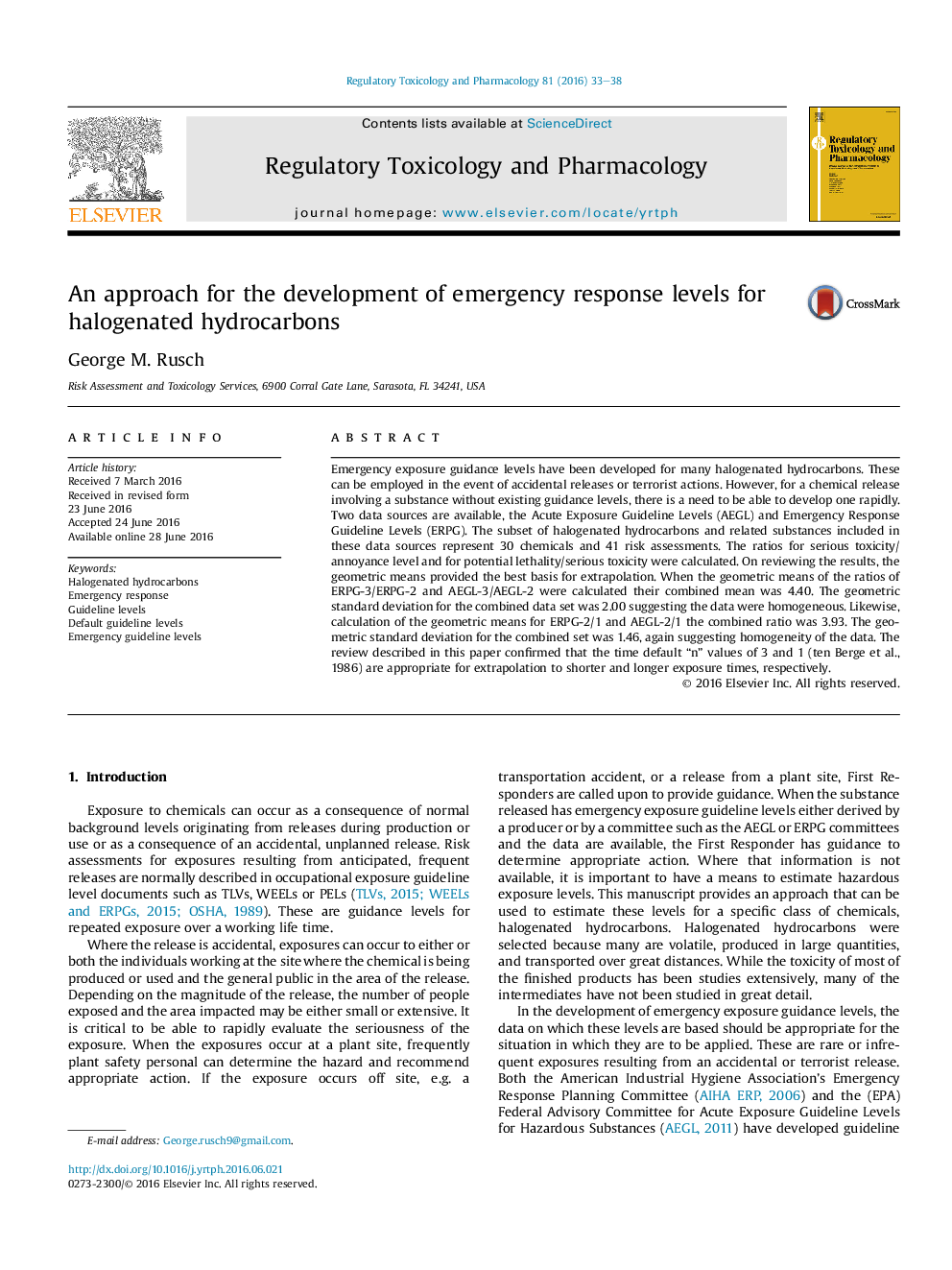| کد مقاله | کد نشریه | سال انتشار | مقاله انگلیسی | نسخه تمام متن |
|---|---|---|---|---|
| 5855704 | 1562122 | 2016 | 6 صفحه PDF | دانلود رایگان |
عنوان انگلیسی مقاله ISI
An approach for the development of emergency response levels for halogenated hydrocarbons
ترجمه فارسی عنوان
یک رویکرد برای توسعه سطوح پاسخ اضطراری برای هیدروکربن های هالوژن
دانلود مقاله + سفارش ترجمه
دانلود مقاله ISI انگلیسی
رایگان برای ایرانیان
کلمات کلیدی
هیدروکربنهای هالوژنی، پاسخ اضطرار ی، سطوح راهنمایی، سطوح پیش فرض راهنمایی، سطوح راهنمایی اضطراری،
موضوعات مرتبط
علوم زیستی و بیوفناوری
علوم محیط زیست
بهداشت، سم شناسی و جهش زایی
چکیده انگلیسی
Emergency exposure guidance levels have been developed for many halogenated hydrocarbons. These can be employed in the event of accidental releases or terrorist actions. However, for a chemical release involving a substance without existing guidance levels, there is a need to be able to develop one rapidly. Two data sources are available, the Acute Exposure Guideline Levels (AEGL) and Emergency Response Guideline Levels (ERPG). The subset of halogenated hydrocarbons and related substances included in these data sources represent 30 chemicals and 41 risk assessments. The ratios for serious toxicity/annoyance level and for potential lethality/serious toxicity were calculated. On reviewing the results, the geometric means provided the best basis for extrapolation. When the geometric means of the ratios of ERPG-3/ERPG-2 and AEGL-3/AEGL-2 were calculated their combined mean was 4.40. The geometric standard deviation for the combined data set was 2.00 suggesting the data were homogeneous. Likewise, calculation of the geometric means for ERPG-2/1 and AEGL-2/1 the combined ratio was 3.93. The geometric standard deviation for the combined set was 1.46, again suggesting homogeneity of the data. The review described in this paper confirmed that the time default “n” values of 3 and 1 (ten Berge et al., 1986) are appropriate for extrapolation to shorter and longer exposure times, respectively.
ناشر
Database: Elsevier - ScienceDirect (ساینس دایرکت)
Journal: Regulatory Toxicology and Pharmacology - Volume 81, November 2016, Pages 33-38
Journal: Regulatory Toxicology and Pharmacology - Volume 81, November 2016, Pages 33-38
نویسندگان
George M. Rusch,
